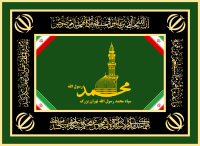Thar-Allah Headquarters
[3] "Thar-Allah" roughly translates to "Allah will revenge (Hussein's blood)", which refers to Imam Husayn ibn Ali, who was killed in the Battle of Karbala in 680 AD/61 AH.
[5]: 2 In the early 1990s, there were widespread protests that, although being economically-driven and not of a political nature in and of themselves, were dealt with a military (combat-level) response by troops drawn from other parts of Iran.
[5]: 3 In recognition of this lack of specialized anti-riot forces, the Ashura and al-Zahra battalions (both consisting of Basij veterans) were established in the 1990s, alongside specific NAJA units.
[5]: 3 The Thar-Allah Headquarters was established in 1995 by the order of Iran's Supreme National Security Council, to be headed by the chief commander of the IRGC.
[4][5]: 4 The Thar-Allah Headquarters was heavily involved in the suppression of the July 1999 Iranian student protests by order of the Supreme National Security Council.
In the aftermath of the protests, Thar-Allah gained full independence as a command centre and was responsible for cracking down on street revolts in 2003.
Some of these tasks consist in monitoring and, if necessary, intervening in sociocultural and social-media activities in Tehran, in what is characterized generally as cultural engineering (part of Thar-Allah's mission is to track down regime opponents in cyberspace and arrest them).
[13] As explained above, the Thar-Allah Headquarters acts as military governor authority of Tehran and thus has significant combat power and influence.

